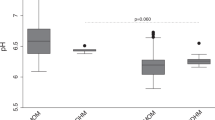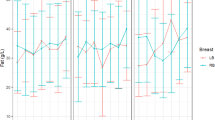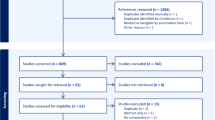Abstract
Objective:
To investigate the effects of fortification and storage on nutrients and properties of various human milk (HM) types.
Study Design:
Mother’s own milk (MOM) and pasteurized donor human milk (DHM; n=118) were analyzed pre- and post fortification with Enfamil and Similac human milk fortifier (EHMF and SHMF) before and after 24 h of refrigerated storage.
Results:
Milk fortified with SHMF had significantly greater osmolality, pH and lipase activity than EHMF. Changes in protein, pH and osmolality following refrigerated storage differed between fortifiers. When milk type was factored into the analysis, protein and lipase activity changes in fresh MOM differed significantly from DHM and frozen MOM. Analysis of UNF HM found higher protein levels in preterm vs term samples and in MOM vs DHM.
Conclusion:
Nutrient composition of HM varies significantly by milk type. Although fortifiers enhance select nutrients, each has the potential to affect HM properties in a unique way and these affects may vary by milk type.
This is a preview of subscription content, access via your institution
Access options
Subscribe to this journal
Receive 12 print issues and online access
$259.00 per year
only $21.58 per issue
Buy this article
- Purchase on Springer Link
- Instant access to full article PDF
Prices may be subject to local taxes which are calculated during checkout




Similar content being viewed by others
References
Sisk PM, Lovelady CA, Dillard RG, Gruber K J, O’Shea TM . Early human milk feeding is associated with a lower risk of necrotizing enterocolitis in very low birthweight infants. J Perinatol 2007; 27: 428–433.
Schanler RJ, Shulman RJ, Lau C . Feeding strategies for premature infants: beneficial outcomes of feeding fortified human milk versus preterm formula. Pediatrics 1999; 103 (6): 1150–1157.
Ronnestad A, Abrahamsen TG, Medbo S, Hallvard R, Lossius K, Kaaresen PI et al. Late-onset septicemia in a Norwegian national cohort of extremely premature infants receiving very early full human milk feedings. Pediatrics 2005; 115 (3): e269–e276.
Vohr BR, Poindexter BB, Dusick AM, McKinley LT, Wright LL, Langer JC et al. Beneficial effects of breast milk in the neonatal intensive care unit on the developmental outcome of extremely low birth weight infants at 18 months of age. Pediatrics 2006; 118: e115–e123.
Schanler RJ, Lau C, Hurst NM, Smith EO . Randomized trial of donor human milk versus preterm formula as substitutes for mothers’ own milk in the feeding of extremely premature infants. Pediatrics 2005; 116 (2): 400–406.
Hill PD, Aldag JC, Chatterton RT, Zinaman M . Comparison of milk output between mothers of preterm and term infants: the first six weeks after birth. J Hum Lact 2005; 21 (1): 22–30.
US Department of Health and Human Services The Surgeon General's call to Action to Support Breastfeeding. US Department of Health and Human Services, Office of the Surgeon General: Washington, DC, USA, 2011.
American Academy of Pediatrics. Breastfeeding and the use of human milk. Pediatrics 2012; 129 (3): e827–e841.
Schanler RJ . The use of human milk for premature infants. Pediatr Clin North Am 2001; 48 (1): 207–219.
Himelright I, Harris E, Lorch V, Anderson M, Jones T, Craig A et al. Enterobacter sakazakii infections associated with the use of powdered infant formula—Tennessee, 2001. MMWR 2002; 51 (14): 298–300.
Kuschel CA, Harding JE . Multicomponent fortified human milk for promoting growth in preterm infants. Cochrane Database Syst Rev 2004, Issue 1. Art. No.: CD000343. doi:10.1002/14651858:CD000343.pub2.
Janjindamai W, Chotsampancharoen T . Effect of fortification on the osmolality of human milk. J Med Assoc Thai 2006; 89 (9): 1400–1403.
Kreissl A, Zwiauer V, Repa A, Binder C, Haninger N, Jilma B et al. Effect of fortifiers and additional protein on the osmolality of human milk- Is it still safe for the premature infant? J Pediatr Gastroenterol Nutr 2013; 57 (4): 432–437.
Abbott Nutrition (Internet). Abbott Laboratories; 2015. Available at http://abbottnutrition.com/brands/products/similac-human-milk-fortifier-hydrolyzed-protein-concentrated-liquid (Accessed on 30 March 2016).
Mead Johnson & Company, LLC. Enfamil Human Milk Fortifier Acidified Liquid (Internet). Mead Johnson & Company, LLC; 2016. Available at http://www.meadjohnson.com/pediatrics/us-en/product-information/products/premature/enfamil-human-milk-fortifier-acidified-liquid#product-features. (Accessed on 30 March 2016).
Erickson T, Gill G, Chan GM . The effects of acidification on human milk's cellular and nutritional content. J Perinatol 2013; 33 (5): 371–373.
Smilowitz JT, Gho DS, Mirmiran M, German JB, Underwood MA . Rapid Measurement of Human Milk Macronutrients in the Neonatal Intensive Care Unit: Accuracy and Precision of Fourier Transform Mid-Infrared Spectroscopy. J Hum Lact 2014; 30 (2): 180–189.
McInerny TK, Adam HM, Campbell DE, DeWitt TG, Meschan Foy J, Kamat DM . American Academy of Pediatrics Textbook of Pediatric Care 2nd edn American Academy of Pediatrics: Elk Grove, 2016.
Thoene M, Hanson C, Lyden E, Dugick L, Ruybal L, Anderson-Berry A . Comparison of the effect of two human milk fortifiers on clinical outcomes in premature infants. Nutrients 2014; 6: 261–275.
Cibulskis CC, Armbrecht ES . Association of metabolic acidosis with bovine milk-based human milk fortifiers. J Perinatol 2015; 35: 115–119.
Khaldi N, Shields DC . Shift in the isoelectric-point of milk proteins as a consequence of adaptive divergence between the milks of mammalian species. Biol Direct 2011; 6: 40.
Omari TI, Davidson GP . Multipoint measurement of intragastric pH in healthy preterm infants. Arch Dis Child Fetal Neonatal Ed 2003; 88: F517–F520.
Perrine CG, Scanlon KS . Prevalence of use of human milk in US advanced care neonatal units. Pediatrics 2013; 131 (6): 1066–1071.
Tully DB, Jones F, Tully MR . Donor milk: what's in it and what's not. J Hum Lact 2001; 17 (2): 152–155.
Baro C, Giribaldi M, Arslanoglu S, Giuffrida MG, Dellavalle G, Conti A et al. Effect of two pasteurization methods on the protein content of human milk. Front Biosci 2011; 3: 818–829.
Arslanoglu S, Moro GE, Ziegler EE . Preterm infants fed fortified human milk receive less protein than they need. J Perinatol 2009; 29 (7): 489–492.
deHalleux V, Rigo J . Variability in human milk composition: benefit of individualized fortification in very low birth weight infants. Am J Clin Nutr 2013; 98 (2): 529S–535SS.
McGuire W, Anthony MY . Donor milk versus formula for preventing necrotizing enterocolitis in preterm infants: systematic review. Arch Dis Child Fetal Neonatal Ed 2003; 88: F11–F14.
Boyd CA, Quigley MA, Brockelhurst P . Donor breast milk versus infant formula for preterm infants: systematic review and meta-analysis. Arch Dis Child Fetal Neonatal Ed 2007; 92: F169–F175.
Kantorowska A, Wei JC, Cohen RS, Lawrence RA, Gould JB, Lee HC . Impact of donor milk availability on breast milk use and necrotizing enterocolitis rates. Pediatrics 2016; 137 (3): e20153123.
Michaelsen KF, Skafte L, Badsberg JH, Jorgensen M . Variation in macronutrients in human bank milk: influencing factors and implications for human milk banking. J Pediatr Gastroenterol Nutr 1990; 11 (2): 229–239.
Wojcik KY, Rechtman DJ, Lee ML, Montoya A, Medo ET . Macronutrient analysis of nationwide sample of donor milk. J Am Diet Assoc 2009; 109 (1): 137–140.
Akibini H, Meinzen-Derr J, Auer C, Ma Y, Pullum D, Kusano R et al. Alterations in the host defense properties of human milk following prolonged storage or pasteurization. J Pediatr Gastroenterol Nutr 2010; 51 (3): 347–352.
Acknowledgements
We gratefully acknowledge the Kelly Peterson and Sinderella Abdallah of Advanced Instruments, Inc., for providing their technological expertise throughout the course of this project. This research was made possible by a grant from the Gerber Foundation. This project was funded by the Gerber Foundation.
Author information
Authors and Affiliations
Corresponding author
Ethics declarations
Competing interests
The authors declare no conflict of interest.
Rights and permissions
About this article
Cite this article
Donovan, R., Kelly, S., Prazad, P. et al. The effects of human milk fortification on nutrients and milk properties. J Perinatol 37, 42–48 (2017). https://doi.org/10.1038/jp.2016.166
Received:
Revised:
Accepted:
Published:
Issue Date:
DOI: https://doi.org/10.1038/jp.2016.166
This article is cited by
-
Effect of fortification on the osmolality of human milk
Italian Journal of Pediatrics (2023)
-
Human milk pH is associated with fortification, postpartum day, and maternal dietary intake in preterm mother-infant dyads
Journal of Perinatology (2023)



